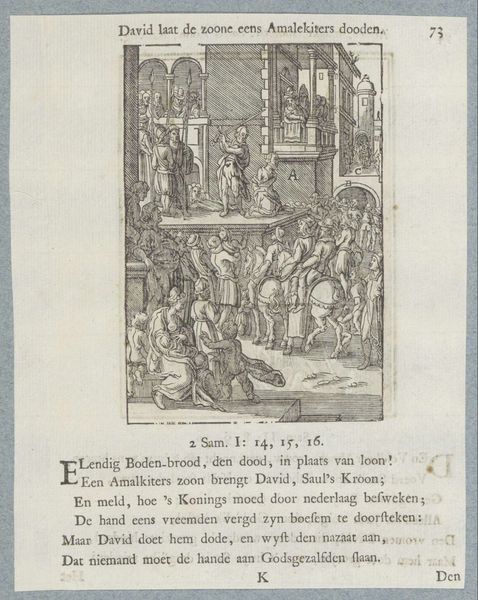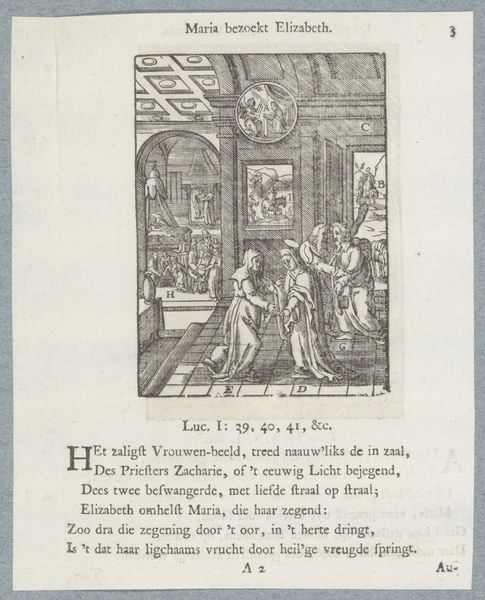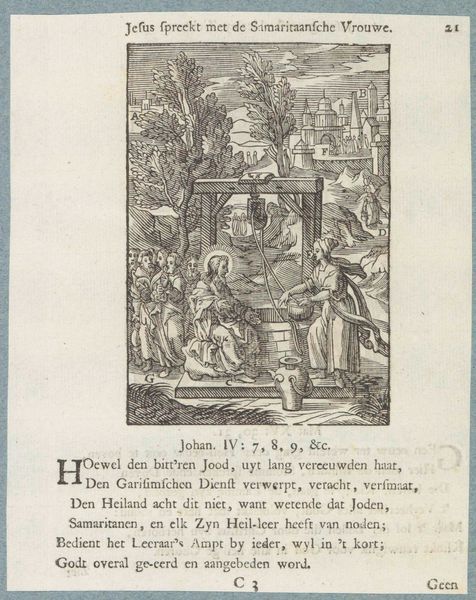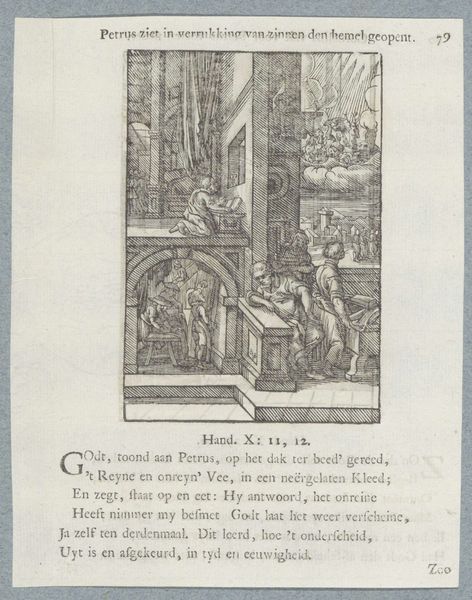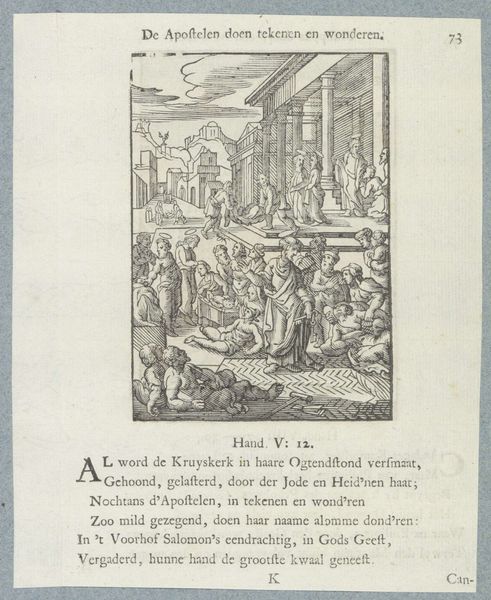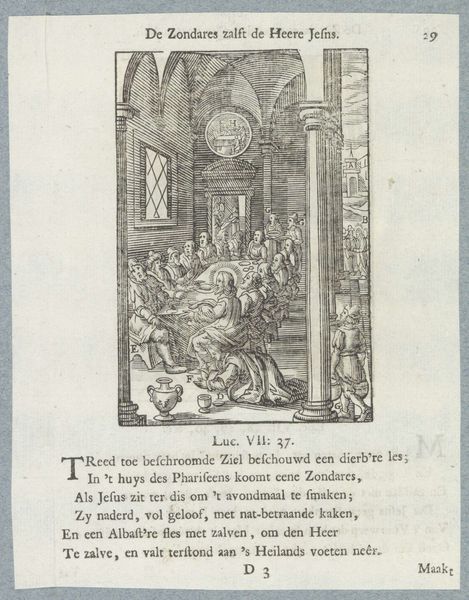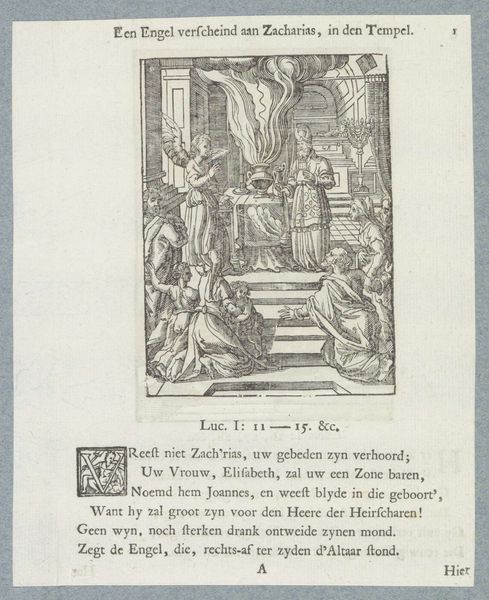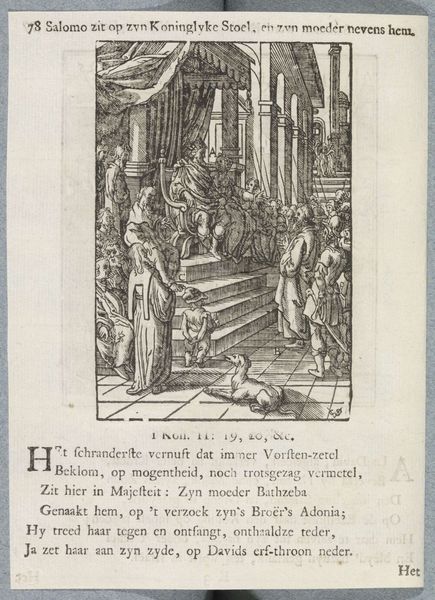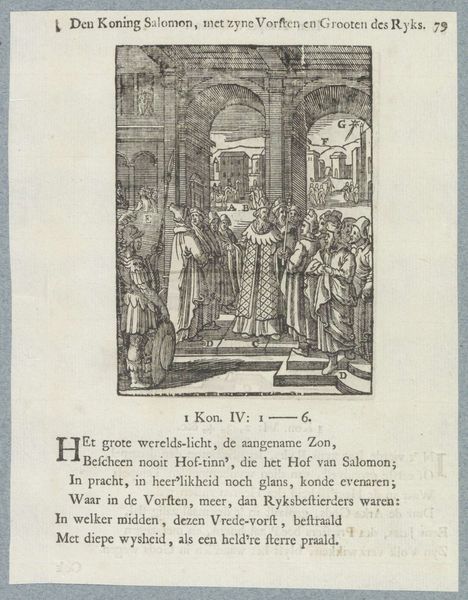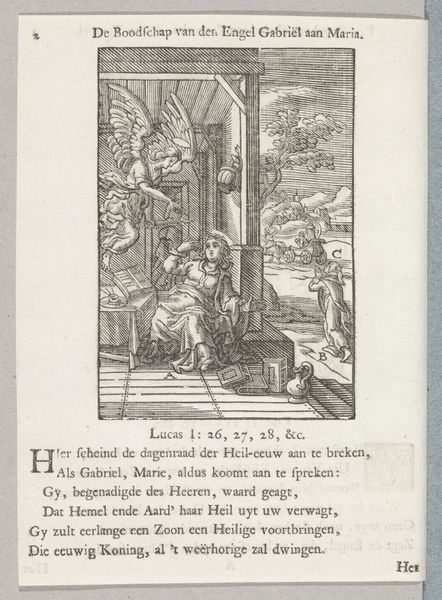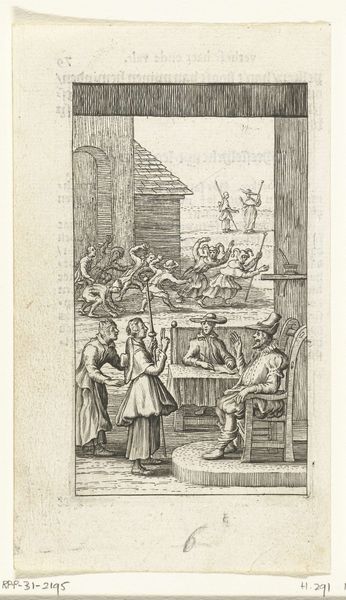
print, engraving
#
narrative-art
#
baroque
# print
#
figuration
#
line
#
history-painting
#
engraving
Dimensions: height 109 mm, width 75 mm, height 166 mm, width 134 mm
Copyright: Rijks Museum: Open Domain
Curator: Let's analyze "Opwekking van Dorkas (Tabita)," an engraving created sometime between 1629 and 1740 and currently held in the Rijksmuseum. What strikes you first about it? Editor: The way the artist divides the scene into distinct levels is intriguing. There’s a clear separation of space, almost like a stage set. What do you see in terms of how the composition guides our eye? Curator: The composition is clearly articulated by a distinct foreground, middle ground and background, isn't it? This division doesn't merely depict space; it establishes a visual hierarchy. Note how the figures are arranged and consider the relationship between the vertical and horizontal lines. The scene appears rigidly organized with meticulous consideration, and it lacks expressive fervor, but remains effective as an understated portrayal of space. Editor: Yes, it’s almost diagrammatic. But doesn't this compositional choice limit the emotional impact, even for a Baroque piece? Curator: Perhaps, but it's more a deliberate decision than a limitation. Observe how the sharp lines delineate form and the way the light, or rather its suggestion through contrasting lines, falls unevenly, drawing our focus in distinct stages. The question here is not about Baroque flamboyance, but about conveying a specific message through carefully controlled means. What do you think that message could be? Editor: Maybe it's about emphasizing the order and divine structure behind the miracle itself. It’s less about the emotional display and more about the underlying power. Curator: Precisely. It asks us to analyze and understand, rather than merely feel. And sometimes that analytical approach can be very powerful indeed. Editor: It's a fresh approach to looking at art; understanding how lines, composition and visual cues come together to shape meaning has broadened my perception.
Comments
No comments
Be the first to comment and join the conversation on the ultimate creative platform.
